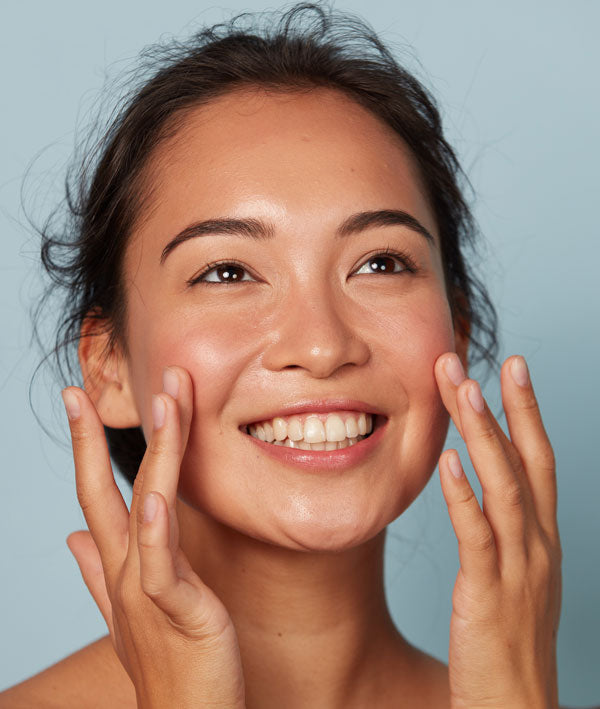If you’re battling persistent breakouts, developing an effective treatment plan starts with identifying what form of acne you’re dealing with. In this guide, we’re discussing what you need to know about bacterial acne, including what causes these types of breakouts, and more importantly, how to treat and prevent them.
Understanding Bacterial Acne
Bacterial acne is a common form of acne that affects both men and women of all ages. It can manifest in the form of blackheads, whiteheads, and other blemishes of varying size, and can appear all over the face and body.
Causes of Bacterial Acne
As you may have guessed, bacterial acne is caused by an overgrowth of a breakout-causing bacteria called Propionibacterium acnes (also known as P. acnes). This bacteria is naturally present on the skin, but when there is an excess, the immune system can respond by sending white blood cells to fight the bacteria. This causes inflammation in the skin, which can result in breakouts.
While anyone may experience bacterial acne, those with oily skin are especially prone. Excess sebum (your skin’s natural oils) may not only clog the pores, but can also create a breeding ground for this bacteria, increasing the risk of blemishes forming.
Effective Treatments for Bacterial Acne
There are a variety of both topical and oral treatments that can help target bacterial acne, including the following:
If you’re battling persistent bacterial acne, it’s best to meet with a board-certified dermatologist. They’ll be able to create a personalized treatment plan to eradicate these breakouts for good.
Lifestyle and Skincare Practices for Prevention
Beyond direct treatments, there are a few additional practices you can implement to help support your skin and reduce your risk of developing bacterial breakouts.
First and foremost, in addition to your treatment, you’ll want to ensure you have a foundational skincare routine to keep your skin clean and healthy. This should include a cleanser and a moisturizer, as well as sunscreen during the day. A cleanser will clear away bacteria and other pore-clogging debris that may contribute to breakouts, while a moisturizer will ensure your skin’s barrier is functioning optimally.
You may also consider adding complimentary serums to support your skin. For example, a hyaluronic acid serum will help counteract the drying effects of your acne-fighting treatments. If you’re dealing with post-inflammatory hyperpigmentation caused by past blemishes, you may also consider adding avitamin C serum to your routine, as it will help lighten spots and brighten the complexion.
When looking for new skincare products, it’s important to seek out formulas that won’t contribute to breakouts. Non-comedogenic formulas are ideal for those with acne-prone skin, as they are designed to be free of ingredients that may clog pores. Those with oily skin may also want to stick with oil-free products.
Additionally, in order to prevent breakouts, avoid touching your face. This can spread bacteria and other debris to your skin, increasing your risk of acne. Last but not least, do your best to manage your stress levels. High levels of stress can trigger breakouts, so implement strategies into your daily routine to keep stress in check.
Dietary Influences
While diet alone likely won’t eradicate your bacterial acne, a balanced diet can contribute to healthy, clear skin. It’s best to avoid high-glycemic foods, and instead reach for fresh vegetables and fruits, as well as whole grains.
Hormonal Balance
It’s also important to consider how your hormones come into play. In addition to bacterial acne, one of the most common forms of acne is hormonal acne. With this type of acne, hormonal fluctuations (such as during menstruation or pregnancy) can trigger sebum production, leading to clogged pores. Androgens (which are male sex hormones) are usually at fault.
Hormonal acne typically comes in the form of deeper pimples, but may also manifest as blackheads or whiteheads. These breakouts will often appear on the lower parts of the face.
Hormonal fluctuations can also have an effect on bacterial acne, since the increased oil levels triggered by hormones can lead to an overgrowth of acne-causing bacteria. Additionally, the excess oil can mix with the bacteria, leading to clogged pores. Ultimately, while hormonal and bacterial acne have different underlying causes, both conditions can influence each other.
A dermatologist will be able to help you determine the root cause of your acne to develop an effective treatment plan. Many of the treatments used to target bacterial acne may also help with hormonal acne, which means you may be able to successfully tackle both forms with the right treatment(s).
Key Takeaways
Here are some final takeaways to keep in mind:
- An overgrowth of bacteria is the root cause of bacterial acne, but it can be worsened by excess oil and hormonal fluctuations.
- There are many over-the-counter and prescription treatments for bacterial acne, including benzoyl peroxide, retinoids, and antibiotics.
- A good skincare routine and some lifestyle shifts can help with the prevention of bacterial acne.






